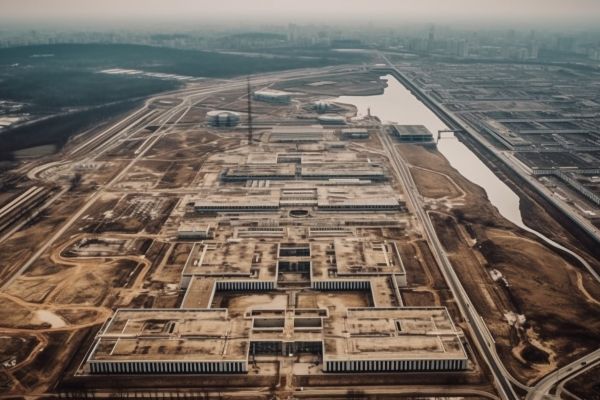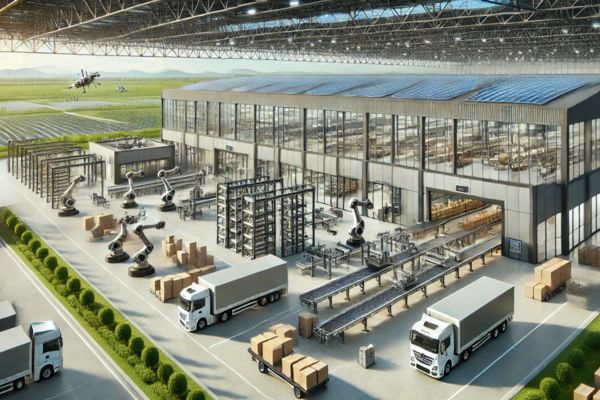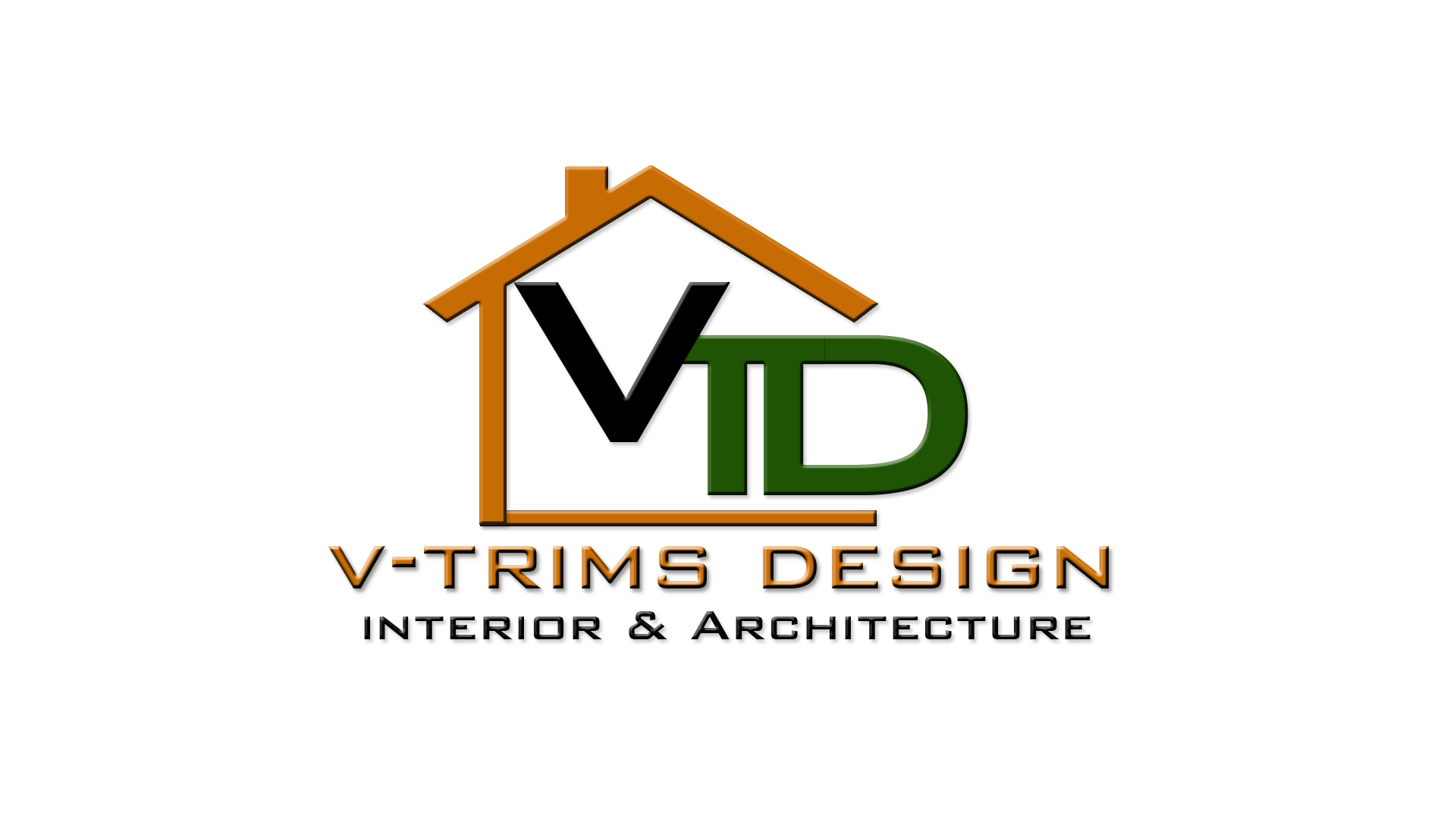NIKHIL GAMING.
21 hours ago

Industrial architecture is more than just large buildings filled with machinery; it is the backbone of efficient production and logistics. Factories and warehouses are meticulously designed to accommodate complex processes, ensuring streamlined workflows, worker safety, and cost efficiency. From the foundation to the rooftop, every element plays a crucial role in optimizing operations and maximizing productivity. As industries evolve, modern industrial spaces must adapt to automation, smart systems, and energy-efficient solutions, making innovation a fundamental aspect of architectural planning.

Designing industrial spaces requires a balance between functionality, efficiency, and safety. Each element, from site selection to structural integrity, plays a crucial role in optimizing operations. Proper planning ensures that factories and warehouses not only meet current demands but also accommodate future technological advancements and sustainability initiatives. Below are the key factors that influence the design of large-scale manufacturing and storage facilities.
Choosing the right location is crucial in industrial architecture. Factors such as proximity to raw materials, transportation hubs, and labor markets influence a factory’s operational success. Additionally, zoning laws, environmental impact assessments, and access to utilities must be considered before breaking ground. Evaluating factors like seismic activity, flood risk, and local infrastructure also plays a key role in long-term sustainability and cost management.
Other considerations include tax incentives, government policies, and access to renewable energy sources. Choosing a location with a strong industrial ecosystem—such as supplier networks and skilled labor pools—can significantly enhance operational efficiency and reduce long-term costs.
Industrial buildings are designed to optimize movement and productivity. A well-planned layout includes:
The use of automation in space planning, such as robotic process flows and smart storage solutions, helps maximize efficiency and improve overall operational accuracy.
Factories and warehouses must withstand harsh conditions, including heavy loads, vibrations, and exposure to extreme weather. The selection of materials such as reinforced concrete, steel, and pre-engineered metal buildings (PEMBs) ensures durability. Moreover, adherence to building codes and safety regulations is paramount to prevent structural failures. Earthquake-resistant structures and wind load considerations are essential in high-risk areas, while the use of corrosion-resistant materials helps extend the lifespan of the structure.
Manufacturing facilities often produce heat, dust, and emissions, making proper ventilation essential. Industrial architecture incorporates:
Proper ventilation not only improves employee health and comfort but also reduces maintenance costs associated with dust accumulation and machinery overheating.
Good lighting enhances productivity and reduces workplace accidents. Design strategies include:
Research shows that well-lit industrial environments improve worker morale and reduce errors. Light zoning strategies, such as motion-activated sensors and dimmable LEDs, further contribute to energy efficiency.
Sustainable practices are becoming increasingly important in industrial design. Energy-efficient buildings reduce costs and environmental impact. Sustainable features include:
Industries are adopting circular economy models, where waste products are repurposed and energy consumption is optimized through smart grid technologies.
Factories and warehouses house flammable materials, making fire safety a top priority. Fire-resistant materials, sprinkler systems, and clear emergency exits are critical components. Additionally, incorporating safety protocols and training programs can minimize risks. Fire-resistant coatings, dedicated hazardous material zones, and automated fire suppression systems further improve fire preparedness.
Efficient warehouse design focuses on storage, retrieval, and inventory management. Advanced strategies include:
High-tech inventory systems reduce the likelihood of errors and increase warehouse efficiency, ensuring faster turnaround times and better stock control.
Smart factories and warehouses are revolutionizing the industry. With the rise of Industry 4.0, industrial spaces are integrating technologies such as:

Industrial architecture continues to evolve with advancements in automation, AI, and sustainability. Future factories and warehouses will prioritize modularity, allowing rapid adaptability to changing production needs. The use of robotics and AI-driven logistics will further enhance efficiency, ensuring industrial spaces remain at the forefront of innovation. Innovations such as autonomous vehicles for material transport and 3D-printed building components will further redefine industrial spaces in the coming years.
At V-Trims Design, we specialize in creating state-of-the-art industrial spaces that maximize efficiency and sustainability. Whether you need a factory, warehouse, or distribution center, our expert team ensures innovative and customized architectural solutions. Contact the best architecture firm in Lucknow today to transform your industrial vision into reality!
3 months ago
VTRIM Design isn’t just designing buildings — they’re designing experiences, stories, and lifestyles. Highly recommended for anyone who values quality, aesthetics, and integrity in architecture.
4 months ago
Gajab ke designer h mera ghar bnaya h jabse roz dekh ke unhi ko yad krta hu kya bnaya h.
4 months ago
Best architecture firm in Lucknow. Exceptionally good in terms of designing and service standards. Professionalism and dedication towards each project is outstanding. I Wish them great success in future. Highly recommended go for v-Trims design
4 months ago
VTRIM Design isn’t just designing buildings — they’re designing experiences, stories, and lifestyles. Highly recommended for anyone who values quality, aesthetics, and integrity in architecture.
4 months ago
Best interior designer in lucknow and best creativity work in interior design
5 months ago
I'm painter and i have been working for long time with v-trims design . This fir is done many attractive projects
5 months ago
"VTRIMS Design truly listens to your needs and offers creative solutions. Their team is very responsive and skilled. Highly professional."
5 months ago
Excellent company.The team is young,talented,and very passionate about design
5 months ago
"If you're looking for modern and elegant interiors, VTRIMS Design is the go-to place. Loved their approach, especially the 3D visuals before execution."
5 months ago
⭐⭐⭐⭐⭐ "From concept to completion, everything was handled with perfection. The team is young, talented, and very passionate about design."
5 months ago
⭐⭐⭐⭐⭐ "Loved working with them! My kitchen and dining space look like something out of a magazine. Superb craftsmanship."
5 months ago
It's nice company work is very fast trustable company Clint always happy interior design so attractive and amazing team all good❤️❤️
5 months ago
⭐⭐⭐⭐⭐ "Very professional team! They handled my 3BHK interior project beautifully. Timely delivery and unique designs. Thank you VTRIMS Design."
5 months ago
"Very professional team! They handled my 3BHK interior project beautifully. Timely delivery and unique designs. Thank you VTRIMS Design."
5 months ago
"Brilliant design, smooth execution and a truly professional team. They turned our vision into a beautiful, functional space we know call home . Highly recommended! "
5 months ago
V Trims is a firm with young and dynamic Architects who are very innovative in designing. They make very good looking contemporary structures with clean finish
5 months ago
Exceptional creativity and execution! The design team perfectly understood our vision and brought it to life with style and functionality. Professional, detail-oriented, and truly passionate about their work. Highly recommended for anyone looking to elevate their space!
5 months ago
They are doing very well construction finishing as welll best wishes for future endeavours
5 months ago
it's too good . There way of talking there designs everything is totally wonderful you all will like their presentation
5 months ago
First of all thanks for V trims design team provided good quality of work unique design i have batter expression with them this credit total goes to Ar vinod Chauhan sir
5 months ago
Just wanted to say a sincere thank you for all the work you have done for us in creating our amazing new space. We love it and were continually impressed by your professionalism, attention to detail, care and the support you provided us during this project. You made the process so easy for us and we are very grateful.
5 months ago
The man behind V-Trims is wow....Hire & give your dream home or Project a wow !!
5 months ago
Keep it up, you’re doing a great job in building architectures. All the best.
5 months ago
"V Trims Design Company is a game-changer in the architectural design field, delivering innovative and functional designs that exceed expectations. Their expertise and attention to detail make them a top choice for any design project."
5 months ago
"Highly impressed every detail reflected thoughtful design and quality craftsmanship.
5 months ago
"Highly impressed with their creativity and professionalism! Good working company... 💪
5 months ago
"Highly impressed with their creativity and professionalism! The team delivered a perfect blend of aesthetics and functionality. Every detail reflected thoughtful design and quality craftsmanship.
5 months ago
Every detail, from the foundation to the finishing, shows top-notch craftsmanship of V-Trims Designs.
5 months ago
"Very professional team! They handled my 3BHK interior project beautifully. Timely delivery and unique designs. Thank you VTRIMS Design."
5 months ago
V-trims Design (Architectural & Interior Design) deals all types of building design, interior design, survey, layout plans for plottings. They provide best quality service at affordable price in U.P.
5 months ago
V-Trims provides exceptional service with a team that's responsive and professional. Their attention to detail and commitment to quality make them a top choice for Architect and interior design.
5 months ago
The firm and its supporting team are genuinely sincere and dedicated.
5 months ago
A really great firm with amazing designs with state of the art features. Decent cost and one of the most disciplined and dedicated team an individual as a client can ask for with very smooth execution.
5 months ago
Sir your work is very beautiful The interior design you have done is beyond comparison. The elevations you have made, the plantation you have done and your team working is very good. I pray to Allah that you get a lot of success.
5 months ago
The trendsetting and innovative architectural capabilities of Vinod and his team set them apart as leaders in the industry.
5 months ago
They managed the project effectively, keeping us on schedule and within budget." or "We were particularly impressed with their ability to adapt to unexpected challenges." "They skillfully addressed any challenges that arose during the project, finding creative solutions."
5 months ago
One of the best architect firm in lucknow There is a lot of cleanliness in their work, all the staff is experienced and well trained, I will always recommend V trims to everyone
5 months ago
"From concept to completion, everything was handled with perfection. The team is young, talented, and very passionate about design."
5 months ago
Very good experience with v-trim team and good supportive team for all the movement to built your dream home...Thanks v-trims ...🙏🙏
5 months ago
Top best Architect for lucknow please contact to V trims Design for every type of Buildings design & Interior/Exterior designing......
5 months ago
Here's a 5-star rating review for V-Trims Design | Architect & Interior: ⭐⭐⭐⭐⭐ Exceptional Design and Professionalism! I had an amazing experience working with V-Trims Design. Their attention to detail, innovative ideas, and seamless execution truly set them apart. From the initial consultation to the final touches, their team was professional, creative, and responsive to every need. They transformed my space into something both beautiful and functional, exceeding my expectations in every way. Highly recommended for anyone looking for top-tier architectural and interior design services!
5 months ago
"VTRIMS design transformed my home into a dream space! Their attention to details and creativity blew me away . Highly recommended for premium interior design in lucknow .
5 months ago
"VTRIMS Design transformed my home into a dream space! Their attention to detail and creativity blew me away. Highly recommended for premium interior design in Lucknow."
5 months ago
"If you're looking for modern and elegant interiors, VTRIMS Design is the go-to place. Loved their approach, especially the 3D visuals before execution."
5 months ago
Very professional team! They handled my 3BHK interior project beautifully. Timely delivery and unique designs. Thank you VTRIMS Design.
6 months ago
"One of the rare firms that balance creativity, technology, and budget without compromising quality. Absolutely worth it!"
10 months ago
Top-Tier Architectural Expertise in Lucknow! Vtrims Design is undoubtedly one of the best architecture firms in Lucknow, offering innovative and aesthetically stunning designs that perfectly blend functionality with creativity. As a leading architect in Lucknow, their team excels in residential, commercial, and interior design projects, delivering outstanding results tailored to client needs. Their expertise in modern architectural solutions, space planning, and sustainable designs sets them apart. Whether you're looking to design a luxurious home, a contemporary office, or a commercial space, Vtrims Design ensures every project is executed with precision and excellence. If you're searching for a trusted and experienced architect in Lucknow, look no further than Vtrims Design. Their professionalism, attention to detail, and commitment to quality make them the go-to choice for architectural services. Highly recommended!
V-Trims Design is an architectural design and construction company in Lucknow founded by young entrepreneurs with a love of design and the belief that every home should be designed to impress and that every person should have a designer lifestyle.
